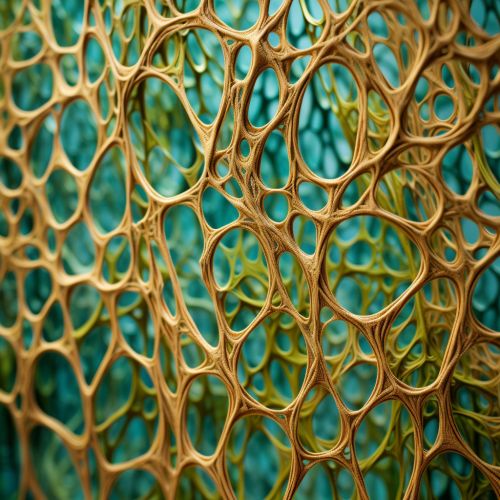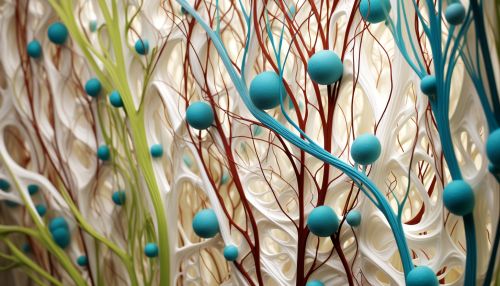Plant Cell Wall
Introduction
A plant cell wall is a structural layer surrounding some types of cells, situated outside the cell membrane. It can be tough, flexible, and sometimes rigid. It provides the cell with both structural support and protection, and also acts as a filtering mechanism. A major function is to act as pressure vessels, preventing over-expansion of the cell when water enters.
Composition
The plant cell wall is primarily composed of cellulose, a complex carbohydrate. Cellulose is organized into microfibrils, which are interwoven with other cell wall components such as hemicellulose, pectin, and proteins to form a complex network.


Cellulose
Cellulose is a linear chain of several hundred to many thousands of β(1→4) linked D-glucose units. It is synthesized at the plasma membrane by a complex of enzymes known as cellulose synthase. The synthesis of cellulose requires energy, which is obtained from the breakdown of ATP.
Hemicellulose
Hemicellulose is a heterogeneous group of polysaccharides that are highly branched, unlike cellulose. They are synthesized in the Golgi apparatus and are then transported to the cell wall via exocytosis. Hemicelluloses are not as resistant as cellulose, contributing to wall extensibility.
Pectin
Pectin is a family of complex polysaccharides that contain a high proportion of galacturonic acid residues. They are synthesized in the Golgi apparatus and secreted into the cell wall. Pectins contribute to the porosity and hydration of the cell wall.
Proteins
The plant cell wall contains a variety of proteins that have a range of functions. Some are structural proteins, contributing to the strength and elasticity of the cell wall. Others are enzymes that help to remodel the cell wall, while others have roles in signaling and defense.
Functions
The plant cell wall has multiple functions, from providing protection to aiding in growth and development.
Structural Support
The plant cell wall provides mechanical strength to the plant. The rigidity of the cell wall counteracts the osmotic pressure exerted by the cytoplasm, preventing the cell from bursting.
Growth and Development
The plant cell wall plays a crucial role in the growth and development of the plant. It determines the direction of cell expansion, and hence the shape of the plant. The flexibility of the cell wall also allows for cell expansion during growth.
Defense
The plant cell wall serves as a first line of defense against pathogens. It forms a physical barrier that prevents the entry of pathogens, and also contains components that can detect pathogen invasion and trigger an immune response.
Types of Plant Cell Walls
There are two major types of plant cell walls: primary and secondary.
Primary Cell Wall
The primary cell wall is the first layer of the cell wall that is formed when a plant cell divides. It is flexible and allows for cell growth and elongation. The primary cell wall is mainly composed of cellulose, hemicellulose, and pectin.
Secondary Cell Wall
The secondary cell wall is a structure found in many plant cells located beneath the primary cell wall. The secondary cell wall is often lignified, which provides additional strength and rigidity. It is involved in many functions, including water transport and defense against pathogens.
